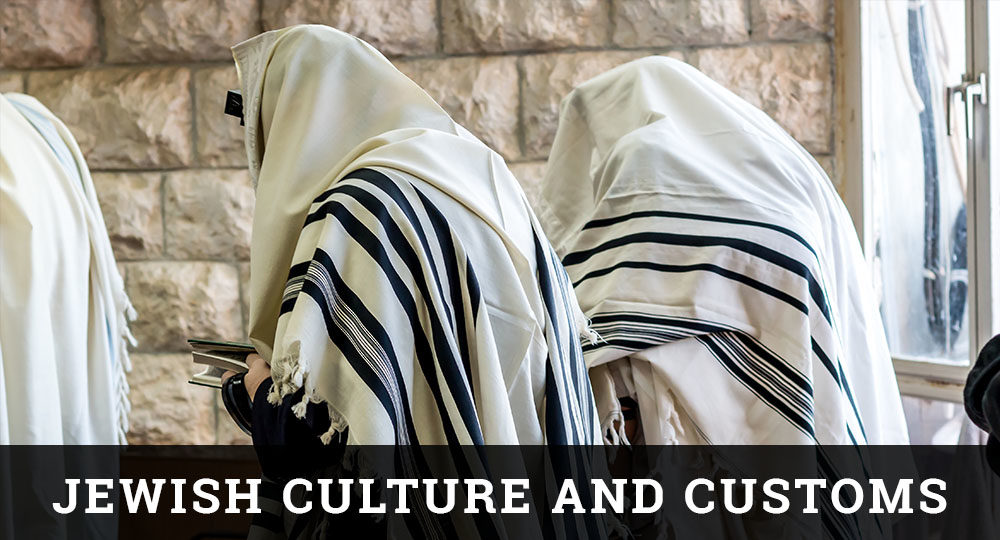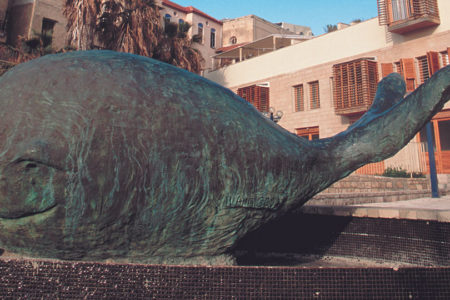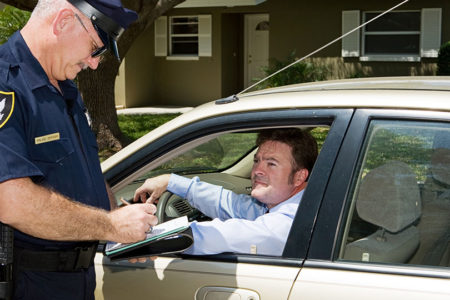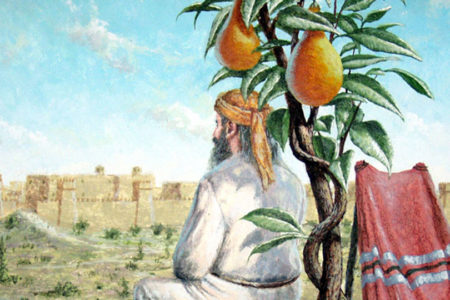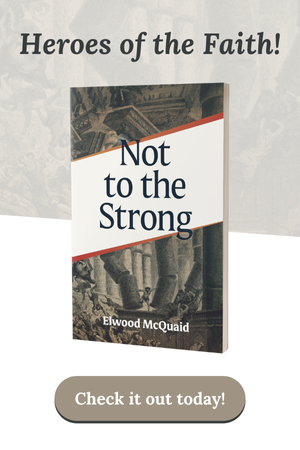Jewish Music: Capturing the Heart of a People Conclusion
In Old Testament days, Jewish worship revolved first around the Tabernacle and later the Temple. Crucial to that worship was music, particularly the skill and purpose of its presentation. In accordance with 2 Chronicles 29:25–27, the priests from the tribe of Levi were directed to play various instruments skillfully as biblical psalms were performed.
In A.D. 70 a stunning event dramatically altered Jewish life. The Romans attacked Jerusalem, leveled the Temple, and forced the city’s mostly Jewish population to flee. This action ended sacrifices, stopped all Leviticalactivity , and silenced the music. As a result, the rabbis forbade the playing of all music, believing that only a total ban could adequately express the tremendous grief associated with the Temple’s destruction.
Not all Jewish people, however, embraced the decision. The issue eventually came before the great Jewish sage Maimonides, who issued this simple and logical ruling: “In spite of the rigor of the law, music could not be suppressed.”1 By the third century A.D., the ban on all music had become largely disregarded. Yet it was upheld in the synagogue and extends even to this day in the Orthodox tradition.
Observant Jewish people believe music will resume when Messiah comes, the Temple is rebuilt, and Temple worship restored. One unique “instrument,” however, has never left the synagogue. This quintessential Jewish instrument is the shofar, or ram’s horn. Some people even believe the sound of the shofar “possesses strength and powers beyond that of common instruments.”2 It is the one instrument played in times ranging from great joy to great despair. Its sound is compulsory during Rosh Hashanah (New Year) and Yom Kippur (Day of Atonement) services.
As global wanderers, the Jewish people have been able to preserve their identity while incorporating into it many of the foreign cultural elements into which they migrated. Thus, to understand what makes music uniquely Jewish, it is probably best to explore three basic categories—religious, celebratory, and entertaining—and three primary styles—Ashkenazi, Sephardi, and Mizrahi.
Ashkenazi originated in such Eastern European countries as Romania and Bulgaria, then extended west and north and eventually reached America. The primary language used is Yiddish (a Hebrew/German mixture). Sephardi originated in countries along the Mediterranean, such as Spain, Morocco, and Turkey. The primary language for this music is Ladino, a mixture of Hebrew and Spanish. And Mizrahi, which means “east,” is Arabic in style, originating in such countries as Persia, Iraq, and Egypt. Its primary language is Hebrew.
Melodies to Draw the Heart
Because only a capella music was allowed at Jewish religious services, a melodious chant arose that is still employed today. Rabbi Judah he-Hasid (1150–1217) said, “Say your prayers in a melody that is most pleasant and sweet to you . . . because the melody will draw your heart after the words that come from your mouth. Supplicate in a melody that makes the heart weep, praise in a melody that makes the heart glad.”3
The Talmud, Judaism’s allimportant, extra-biblical work, exhorts, even requires, a worship leader to be “skilled in chanting and having a pleasant voice.”4 Some special melodies are memorized and passed down from generation to generation. Incorporated with scriptural texts, these are called cantillations.
Cantillations are “vocal inflections used for emphasis while reading texts aloud, inflections which were handed down by oral tradition until the 10th century, when they were codified.”5 The reader chants the text using only a series of musical notations that look like squiggles above or below each word. These are called trop. Said one expert, “Christian Gregorian chanting is actually a descendant of Jewish chanting of the Torah via cantillation.”6
Any Jewish boy preparing to become a bar mitzvah is familiar with these marks. His responsibility is to memorize the musical voice inflections associated with each little mark and then memorize his haftorah, the portion of Scripture read on his special day. On the day of his bar mitzvah, he marries the marks with the text in the prescribed singsong manner.
Cantillations are taught in yeshivot(Hebrew schools) or by a tutor. Depending on the Scripture, they are sung either in a melancholy or happy tune. Either way, they were recorded as “musical notations . . . which have served as accents, punctuation marks, and musical interpretations of the texts.”7
In addition to scriptural voice music, prayers known as nusaimare also chanted. Recited on the high holidays and festivals, some of these chants go as far back as the days of the ancient Temples:
These simple responsive and unison readings in the Temple gave rise to the ancient synagogue melodies which became the core of the synagogue Nusah, as we read in the Talmud: “At the time the Israelites ascended from the Red Sea . . . how did they render the song [of Moses]? . . . R. Nehemiah declares: Like a school-teacher who recites the Shemain the synagogue, viz., he begins first and they respond after him. (Sotah 30b).8
Not every prayer has or had a distinctive nusah. Over time new nusaimhave been introduced. Usually the person who writes these new prayers is the hazan, or cantor. Today a cantor must have a professional quality voice that adds a powerful dimension to the service, as well as the ability to write musical prayers. Whether Orthodox, Conservative, or Reform, every synagogue usually employs a full-time cantor. In many instances, cantors write nusaimcontinually. It should be noted that, while Orthodox Jews continue to abide by the ban on instruments and choirs, most Conservative and Reform congregations do not. For these two groups, the quality of the music takes precedence over the performer’s piety or religious background. Thus some congregations hire Gentiles to sing their worship songs.
Hasidism, the most pious of all Jewish movements, roots its worship in the concept of joy. This thrust reflects the teaching of its founder, an eighteenth-century Eastern European mystic named Israel Ben Eliezer, known throughout Judaism as Baal Shem Tov (“Master of the Good Name”). Said one Jewish author, “The ecstasy of melody is one of the primary keys that Hasidism used to unlock the gates of heaven. It is, so to speak, the ladder to the throne of God.”9
The words to Hasidic music are among the easiest to recite. They are words like la-la, bim-bam-bim, vim-va-voom, dai-dai-dai, etc. In the movie Fiddler on the Roof, Tevya the milkman sang the song “If I Were a Rich Man,” using many such words.
A Hasidic rabbi once said that melody is the outpouring of emotions. Thus the tunes and, in many cases, the words spring from the heart. One of the best-known Hasidic melodies is not even known as Hasidic at all. Regarded as an Israeli song, it is played at most Jewish weddings and bar mitzvahs around the world. Performed by many well-known recording artists, it was created “in the court of the rebbe of Sadigura at the turn of the century.”10 The words are simple: “Come let us be glad and rejoice. Come sing and be gay. Awake brothers with a joyful heart.” The tune is electric. When people hear it, they are captivated and inspired to sing it, dance, and clap their hands. Perhaps you will recognize it as Hava Nagilah.
Hasidim also uses dance in its music and worship. From the gentle sway while praying, to the vigorous dance of the hora, Hasidism teaches that the whole being must be able to sing. This belief is based on Psalm 35:10: “All my bones shall say, LORD, who is like unto thee…?” Some of these dances are still used today.
Melodies to Grow Old With
Celebratory and entertaining music take into account life-cycle events, such as bar mitzvahs, weddings, and anniversaries. These types of music are pleasant to listen to, and both instruments and voice are used frequently. Probably the two most popular instruments with Jewish people are the violin and clarinet. “Why this should be so, no one really knows, though there’s a joke that says: ‘Have you already seen someone running away from a pogrom [persecution] with a piano under his arm?’”11
A particular style of music that many people identify as Jewish is klezmer. Yet, according to klezmer expert Ari Davidow, “Not all Jewish musicians play klezmer, not all Jewish music is klezmer, and not all klezmorim [people who play klezmer] are Jewish.”12 Larry Maxey, a non-Jewish clarinetist, called klezmer “a microcosm of all that music has to offer—joy, pathos, dance, lyricism.”13
The word klezmeris Yiddish but comes from the biblical Hebrew kleyzemeror kelizemer, meaning “vessels of song.”14 Describing klezmer music is difficult. Bands play it; yet drums, common to most bands, usually do not. A pure klezmer band is not supposed to have vocalists, yet many do.
Klezmer music had its beginnings in the fifteenth century in the shtetls, the close-knit, Yiddish-speaking communities of Eastern Europe; yet it thrives today in the musical meccas of America. Klezmer bands don’t limit themselves to klezmer music and usually play anything from Israeli tunes to jazz to rock ’n’ roll. Klezmer music was designed to dance to. It swings. What jazz is to the African-American community, klezmer is to the Jewish community. Some people would even call it Jewish soul music. Said writer Moshe Denburg,
The Jewish people and their music have their roots in the Middle East, specifically in the land of Israel, and their branches everywhere. They have lived, for over 2000 years, amongst many cultures, both Eastern and Western—from Iran to Israel, to the Western Mediterranean and North Africa, to Europe, and most recently, the Americas.15
Their love for music can be seen by looking at the number of their accomplished musicians. If you check the list of musicians in the Encyclopaedia Judaica, you will see eighteen full pages of accomplished composers, instrumentalists, musicologists, singers, writers, and conductors. It is no accident that one of the all-time favorite songs in Israel is called, simply, “Hallelujah.” God has blessed the world with the wonderful ability to play and hear music. We can all say or sing Hallelujah—praise the Lord!
ENDNOTES
- Abraham E. Millgram, Jewish Worship, The Jewish Publication Society of America, Philadelphia, 1971, p. 364.
- “Jewish Music,” [http://www.templesanjose.org/ JudaismInfo/song/music.htm].
- Rabbi Hayim Halevy Donin, To Pray As a Jew, Basic Books, Inc., New York, 1980, p. 21.
- Ibid.
- “Jewish Music.”
- Ibid.
- Millgram, p. 365.
- Ibid., p. 366.
- Richard Siegel and Carl Rheins (eds.), The Jewish Almanac, Bantam Books, 1980, p. 462.
- Ibid., p. 468.
- “Jewish Music.”
- Ari Davidow, “About the Klezmer Revival,”
